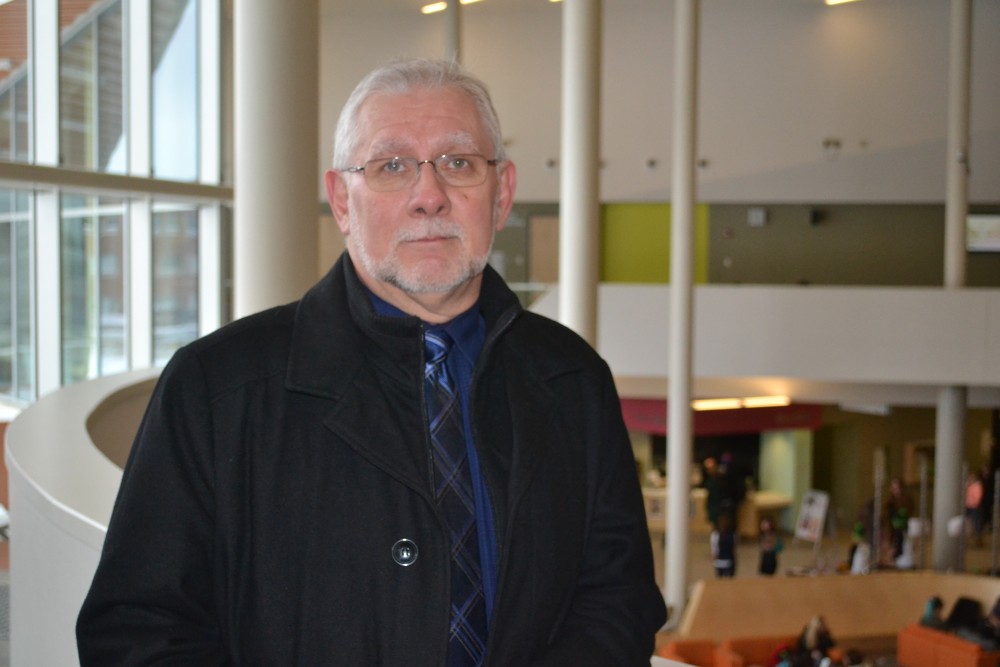
and sustainability. He oversees new developments
and renovations related to green technology
on campus.
The solar panels on the ACCE building – touted by its designers as a marvel of green engineering – don’t generate enough power to significantly offset any electricity costs in the structure.
“They are definitely demonstration pieces,” said Phil Rouble, associate director for facilities planning and sustainability. “They were never meant to generate a lot of power.”
The panels are there to enable students enrolled in the green architecture program to see photovoltaic arrays first hand and to better understand the technology.
Rouble went on to explain that while the college welcomes solar technology, they first have to ensure a full-size project is a financially viable option.
“They’re one of the things we would have loved to get,” he said.
However, Siemens, a German engineering giant with years of experience in green construction is heading toward the final phase of an energy savings contract, which hopes to save Algonquin close to $3.7 million a year.
The contract is similar to a normal loan, since Siemens will be putting the initial money up for the renovations, and the college will be paying them back over time.
However, as Rouble points out, the energy savings and reduced maintenance costs resulting from the contract are used to pay the loan back, a win-win situation for both parties.
In fact, the savings have been large enough to pay for a full time sustainability coordinator.
Even though both ESCO projects have been beneficial to the college, they have gone mostly unnoticed by students since most of the upgrades occurred behind the scenes. There’s no big ribbon to cut on the new HVAC system put into B building over the summer, but it was a big part of phase two of the project.
Phase one took place in 2005 and involved sealing buildings effectively and upgrades to the water, lighting and heating systems. It is at the end of the payback period, meaning it will generate about $600,000 in savings annually.
A cogeneration plant expansion next to C – building is planned to be completed by December 2015, allowing for more efficient power and heat generation at the College. Cogeneration uses excess heat created by power generation to heat the campus, greatly increasing energy savings.
“You’re generating the power, but you’re putting the heat to work as well,” explained Rouble.


